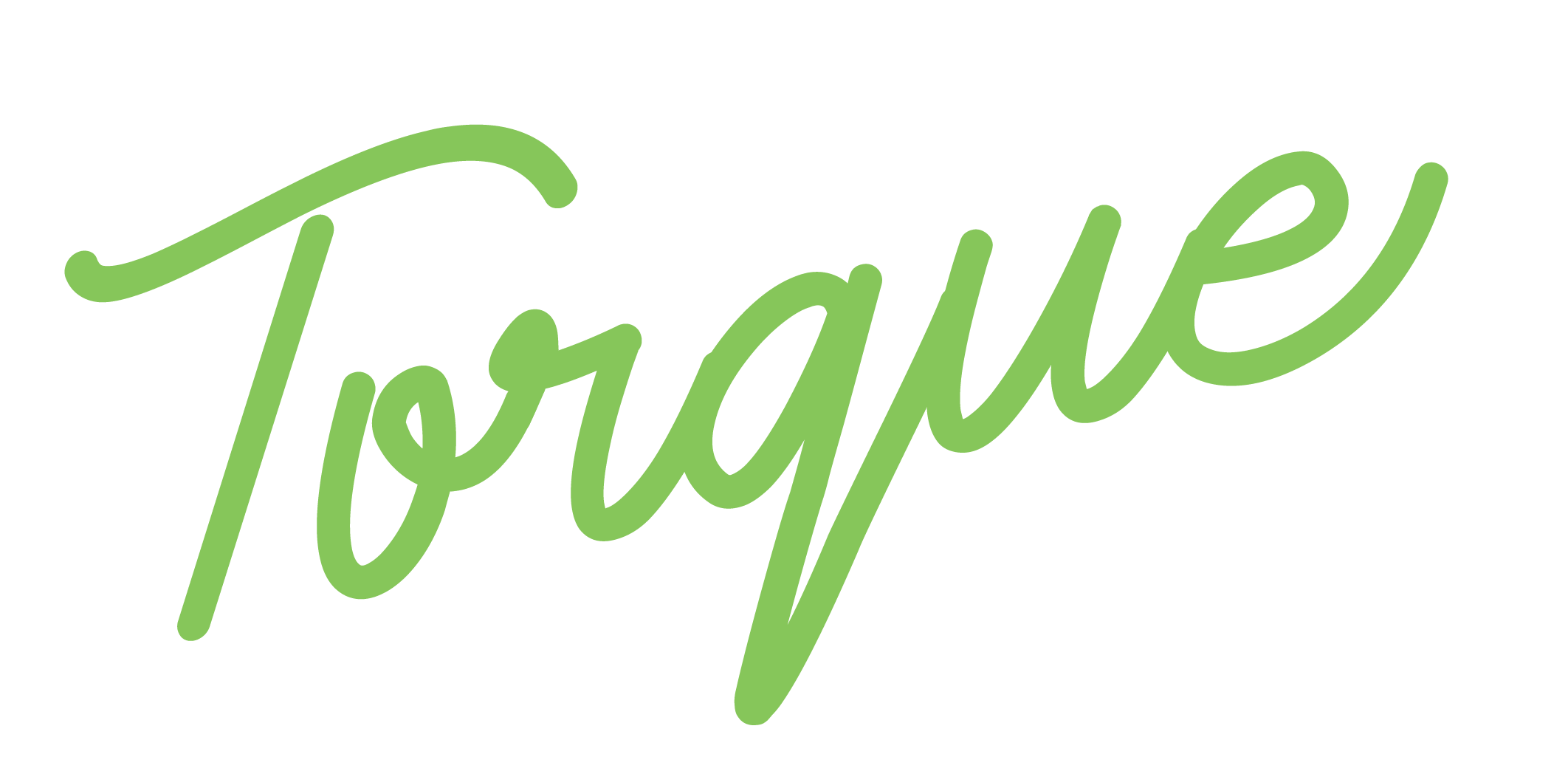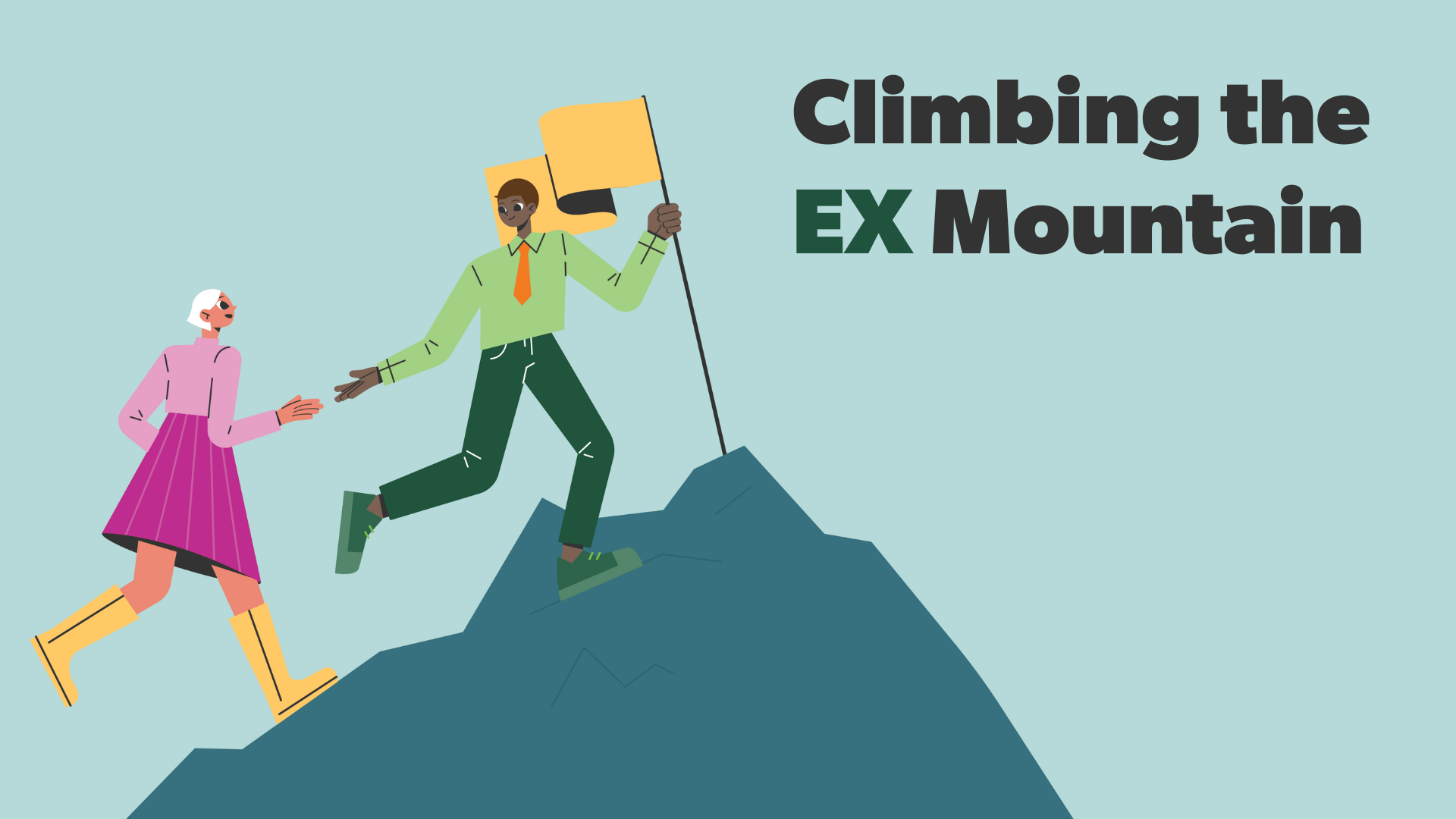
The 'Messy Middle' of EX
Aug 8
/
Megan Hudson

Have you ever watched rock climbers making their way up a rock wall? They rarely move in a straight line. They often pause to plan their next step, searching for that crucial grip or toehold to get them closer to the top.
When we think about employee experience, our minds often jump to the excitement of the initial ascent: the attraction and onboarding phase. It’s a time of energy, enthusiasm, and new beginnings. But just like rock climbing, the real challenge - and the real journey - begins once the initial thrill fades and you're navigating the 'messy middle'.
It’s much like what employees go through after joining an organisation and completing their onboarding. They're left to find their way through their daily tasks and career progression. This is when they’re essentially free climbing, but ideally, with a safety rope held by a supportive belayer who can catch them if they slip. Yet, things can quickly become challenging. Just ask any rock climber who’s been left hanging by one arm from an overhang with no clear path forward or end in sight.
What is the 'messy middle'?
The ”messy middle” is a time characterised by complexity, and is the part of the journey where the employee is building and strengthening relationships, creating networks and resources and deepening their knowledge, experience and value to the organisation. It’s during this phase that a lot of the organisation’s IP is formed, preserved and exchanged.
Entering the 'messy middle'
But as any seasoned climber knows, the true test comes after the initial ascent. The rock face becomes more complex, the handholds less obvious, and the initial adrenaline starts to wane. In the context of the employee journey, this phase represents the period after onboarding, where employees settle into their roles and the honeymoon phase dissipates.
This is where talent thrives or battles to survive, and the savvy HR team needs to ensure that their listening strategy is truly listening, and is responsive to what is happening throughout the business.
Two things are going to stand the employer and the employee in good stead during this 'climbing wall' phase: the employee value proposition (EVP) and a carefully mapped employee journey. These are what help maintain the high level of commitment that a great onboarding has created, and the EVP will serve as the navigation guide through the messy middle.
The Employee Value Proposition (EVP)
Let's start with EVP.
This “promise” between employer and employee is like the rope connecting climbers to each other and to the solid rock that they are navigating. It’s the alignment between the business goals, brand and behaviour and what the employee experiences in the course of their work.
This “promise” between employer and employee is like the rope connecting climbers to each other and to the solid rock that they are navigating. It’s the alignment between the business goals, brand and behaviour and what the employee experiences in the course of their work.
With the increased war to attract and retain talent, research is showing that the EVP and the employee experience of that EVP can be the fine line between retaining or losing highly talented and valuable employees.
Torque works with a 6-pillar EVP model with the pillars being:
Torque works with a 6-pillar EVP model with the pillars being:
- The company, it’s values, purpose and mission
- Growth or in other words the amount of potential the job and role offers to learn, grow and develop
- Security – job security, safety in the workplace. Gallup's survey indicates that 74% of employees view job security as a major factor in their job search. Emphasising this can attract top talent looking for stable career opportunities.
- The employee experience and all of the moments that cumulatively make it up
- Rewards, remuneration and benefits, which all boil down to one thing: a recognition in one form or another of the value that the employee is contributing
- Diversity, inclusion and belonging and the sense that the employee can bring their full, authentic self to the workplace.
During a workshop that we recently held to teach companies how to develop an EVP, one of the places that emerged strongly where the EVP could fail was at the level of managers and supervisors in the workplace. If they don’t model and what is embodied in the EVP, employees will experience a disconnect between the promise and the presence of the EVP.
People in management and supervisory positions are important EVP ambassadors and your company needs to ensure that they are regularly reminded of the EVP and how to authentically embody it in the workplace. Here are some tips on how to ensure the experience remains a positive one for all involved:
The Importance of Clear Communication
One of the key elements in navigating the crux of the climb is clear communication. Climbers rely on constant communication with their belayer, ensuring they have the support and guidance needed to tackle difficult sections. In the workplace, clear communication from leadership and managers is crucial in guiding employees through challenges. Regular check-ins, transparent feedback, and open channels for dialogue help employees feel supported and understood.
Providing the Right Tools and Resources
Imagine trying to tackle a challenging climb without the proper gear. It’s not just difficult; it’s dangerous. Similarly, employees need the right tools and resources to succeed in their roles. This includes ongoing training, access to necessary technology, and a supportive work environment. Providing these resources not only equips employees to handle their current tasks but also prepares them for future challenges.
Imagine trying to tackle a challenging climb without the proper gear. It’s not just difficult; it’s dangerous. Similarly, employees need the right tools and resources to succeed in their roles. This includes ongoing training, access to necessary technology, and a supportive work environment. Providing these resources not only equips employees to handle their current tasks but also prepares them for future challenges.
Encouraging Continuous Learning and Growth
The best climbers are those who are constantly learning and improving their techniques. They attend training sessions, practice regularly, and seek out new challenges to hone their skills. In the workplace, fostering a culture of continuous learning and growth is essential. This can be achieved through professional development programs, mentorship opportunities, and encouraging employees to take on new and challenging projects.
Maintaining Motivation and Engagement
One of the most significant challenges in the "messy middle" is maintaining motivation and engagement. The initial excitement of the climb has faded, and the summit is still far off. Climbers and employees alike must find ways to stay motivated and engaged during this phase.
Recognition and Rewards
Recognition and rewards play a crucial role in maintaining motivation. Just as climbers celebrate reaching key milestones on their ascent, employees need to feel recognized and valued for their achievements. This can be through formal recognition programs, informal praise, or tangible rewards such as bonuses and promotions.
Building a Sense of Community
Climbing is often a team effort, and the sense of camaraderie and support from fellow climbers can be a powerful motivator. In the workplace, fostering a sense of community and belonging is equally important. Team-building activities, collaborative projects, and creating a supportive work culture help employees feel connected and engaged.
Recognition and rewards play a crucial role in maintaining motivation. Just as climbers celebrate reaching key milestones on their ascent, employees need to feel recognized and valued for their achievements. This can be through formal recognition programs, informal praise, or tangible rewards such as bonuses and promotions.
Building a Sense of Community
Climbing is often a team effort, and the sense of camaraderie and support from fellow climbers can be a powerful motivator. In the workplace, fostering a sense of community and belonging is equally important. Team-building activities, collaborative projects, and creating a supportive work culture help employees feel connected and engaged.
Overcoming Obstacles and Setbacks
Every climb has its obstacles and setbacks - loose rocks, unexpected weather changes, or fatigue. The key is to stay resilient and adaptable, finding new routes and solutions when faced with challenges.
Embracing Flexibility and Adaptability
Flexibility and adaptability are crucial traits for both climbers and employees. Companies can support this by creating an environment that encourages innovation and problem-solving. This includes being open to new ideas, allowing employees to experiment and learn from failures, and adapting strategies as needed.
Flexibility and adaptability are crucial traits for both climbers and employees. Companies can support this by creating an environment that encourages innovation and problem-solving. This includes being open to new ideas, allowing employees to experiment and learn from failures, and adapting strategies as needed.
Providing Support During Tough Times
During difficult sections of a climb, climbers rely heavily on their belayers for support. In the workplace, providing support during tough times is equally important. This can include mental health resources, access to counseling services, and creating a culture where it’s okay to ask for help.
Reaching the Summit: The Role of Leadership
Leadership plays a crucial role in guiding employees through the 'messy middle'. Just as a climbing guide provides direction, encouragement, and expertise, leaders must do the same for their teams.
Without trying to put too much of a load onto the poor manager’s rope, research has consistently shown for decades that the relationship between an employee and their direct superior is primarily responsible for employees deciding whether to stay or leave. While you may always want to feel tension in your rope when climbing a rock face, tension between co-workers needs to be managed before it gets out of hand.
Without trying to put too much of a load onto the poor manager’s rope, research has consistently shown for decades that the relationship between an employee and their direct superior is primarily responsible for employees deciding whether to stay or leave. While you may always want to feel tension in your rope when climbing a rock face, tension between co-workers needs to be managed before it gets out of hand.
What are the signs of strain to look out for?
In his book, Five Dysfunctions of a Team, Patrick Lencioni identified the following signs (all of which, we’re sure you’ll agree, are essential to navigating the rock face of the work environment):
- Absence of trust where team members are not able to be vulnerable and honest with each other
- Fear of conflict with team members maintaining an artificial harmony
- Ambiguity arising from a lack of commitment and buy-in to team decisions
- Avoidance of accountability
- Inattention to team results, with team members focusing only on their own agendas to the exclusion of the collective goals and good.
An accident in the making.
Leading by Example
Leading by Example
Effective leaders lead by example, demonstrating the behaviours and attitudes they expect from their teams. This includes showing resilience in the face of challenges, being transparent and honest, and continuously seeking opportunities for growth and improvement.
Providing Vision and Direction
Climbers need a clear vision of the summit and a well-thought-out route to get there. Similarly, employees need a clear understanding of the company’s vision and their role in achieving it. Providing this direction helps employees stay focused and aligned with the organization’s goals.
The 4 Pillars of Employee Experience
At Torque, we work with our 4 pillars of Employee Experience which are (in no particular order): function, reward, conversation and community.
Having the right (functional) tools to do the job is one of the foundations of consistently good employee experience and, with the escalating rate and sophistication of developments in automation, AI, AR and VR, there’s no excuse for employers not to provide tools that are fit-for-purpose.
A great predictor of a good employee experience is whether or not the employee develops friendships in the workplace. A strong sense of community and belonging drive positive EX. Feeling recognised and being rewarded for the contribution that they make is another predictor of good EX, but it’s always good to recognise that one size doesn’t fit all, and to be creative and flexible in the personalisation of rewards and recognition initiatives.
Finally, the ability to create and maintain two-way conversation between the organisation and the employee requires a delicate blend of communication skills, intuitiveness and clever use of modern technology.
Just as in rock-climbing, when it comes to navigating the messy middle, it’s always good to have a friend or to be able to rely on a team so that you don’t feel like you need to navigate the messy middle rock face without back up.
The Journey is Just as Important as the Destination
The 'messy middle' of the employee journey is where the real work happens. It’s where employees grow, develop, and overcome challenges. Just as in rock-climbing, this phase is just as important as the initial ascent and the final push to the summit. By providing clear communication, the right tools and resources, continuous learning opportunities, recognition, support, and strong leadership, companies can help their employees navigate this challenging phase and emerge stronger and more engaged.
The climb may be tough, but the view from the top is worth it. And for both climbers and employees, the journey itself is filled with invaluable lessons, experiences, and growth. So, as we continue to attract and onboard top talent, let’s also focus on supporting them through the 'messy middle' - because that’s where the real adventure begins.


